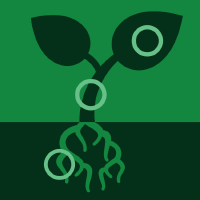Topic Menu
► Topic MenuTopic Editors


Plant Chloroplast Genome and Evolution
Topic Information
Dear Colleagues,
The chloroplast plays a crucial role in the energy metabolism of plant cells. Its genomes are an essential part of data for phylogenetic and evolutionary studies. With the development of genome sequencing technology, plastid genomes from thousands of plant species have been deciphered, which provides suitable opportunities for organelle genome analysis. Plastid genomes have also been used to reconstruct deep phylogenetic relationships, to derive reticulate evolutionary histories or to phylogenetically place taxa. Despite the upsurge in popularity, decades of studies have raised controversy on the advantages and shortcomings of plastome phylogenomics. Features such as the inheritance characteristics of plastomes, recombination, gene transfer, or specific evolutionary patterns may result in wrong inferences. Whereas tree discordances often are the primary indication for such problems, the underlying mechanisms need to be more extensively explored. The challenges and possible workarounds for such issues with plastome data have to be addressed clearly, and it is essential to show which situations plastome phylogenomics can contribute to, and to find explanations for situations where they fail to do so. Meanwhile, recognition or accreditation standards for plastid genomic applications remain limited, and there is a need for an effective standardisation of methods for generating, analysing and conducting organelle genomic experiments. In this Topic, we hope to collect new plant plastid genomes and to infer phylogenetic correlations. Our aims are to investigate plastid genome features, transfer between organelle genomes and organelle genome mutations, with a focus on their morphological characteristics, evolutionary variation within and between populations, functional variation, and other relevant research topics. All of these will help us to deepen our understanding of plant plastid genomes. If you are interested in contributing to this topic, please let us know as soon as possible. We look forward to hearing from you.
Prof. Dr. Chao Shi
Dr. Lassaâd Belbahri
Dr. Shuo Wang
Topic Editors
Keywords
- organelle genome
- chloroplast
- genetic structure
- comparative analysis
- phylogeny
- interspecific relationships
- population genomics
Participating Journals
| Journal Name | Impact Factor | CiteScore | Launched Year | First Decision (median) | APC |
|---|---|---|---|---|---|

Diversity
|
2.4 | 3.1 | 2009 | 17.8 Days | CHF 2600 |

Forests
|
2.9 | 4.5 | 2010 | 16.9 Days | CHF 2600 |

Genes
|
3.5 | 5.1 | 2010 | 16.5 Days | CHF 2600 |

International Journal of Plant Biology
|
- | 1.1 | 2010 | 14.4 Days | CHF 1200 |

Plants
|
4.5 | 5.4 | 2012 | 15.3 Days | CHF 2700 |

MDPI Topics is cooperating with Preprints.org and has built a direct connection between MDPI journals and Preprints.org. Authors are encouraged to enjoy the benefits by posting a preprint at Preprints.org prior to publication:
- Immediately share your ideas ahead of publication and establish your research priority;
- Protect your idea from being stolen with this time-stamped preprint article;
- Enhance the exposure and impact of your research;
- Receive feedback from your peers in advance;
- Have it indexed in Web of Science (Preprint Citation Index), Google Scholar, Crossref, SHARE, PrePubMed, Scilit and Europe PMC.


